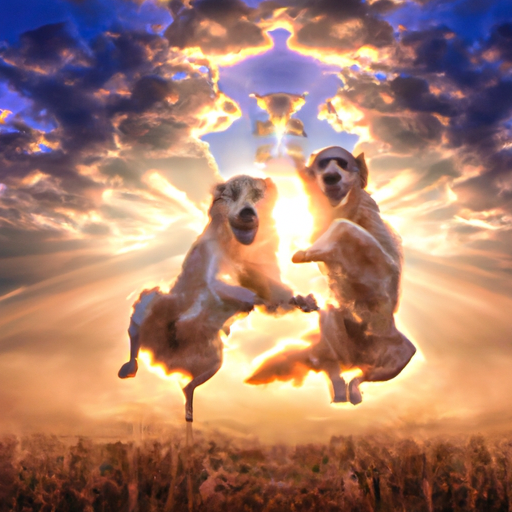Understanding The Phenomenon
You may have witnessed a unique spectacle in the sky, a pair of bright spots or halos on either side of the sun. This captivating occurrence is known as sun dogs, or scientifically termed as parhelia. As a caregiver, it’s essential that you understand this natural spectacle, to explain it to those in your care when they encounter it.
Sun dogs are formed by the interaction of sunlight with ice crystals in the Earth’s atmosphere. They typically appear when the sun is close to the horizon, during sunrise or sunset. The ice crystals act like prisms, bending the sunlight and creating the illusion of two additional, bright suns on either side of the real one.
The Science Behind Sun Dogs
Sun dogs form when sunlight refracts, or bends, through ice crystals in the atmosphere. Here’s a simplified sequence of how the process works:
- Sunlight enters an ice crystal.
- The light bends as it passes through the crystal.
- The bent light exits the crystal, creating the sun dog.
The specific shape and orientation of these ice crystals can affect the appearance of the sun dogs. The most common form they take is that of two bright spots on either side of the sun, often accompanied by a larger halo effect.
Cultural Significance of Sun Dogs
Sun dogs have captured human imagination for centuries. They are seen as harbingers of change, omens of significant events, or simply as beautiful, ethereal displays.
In many cultures, sun dogs are considered to be:
- Good Omens: Some believe that sun dogs herald good fortune or significant change.
- Spiritual Signs: Others see them as spiritual signs or messages from the divine.
- Natural Wonders: Most of us appreciate them as stunning natural phenomena, a testament to the beauty of our world.
How to Spot a Sun Dog
Spotting a sun dog can be a thrilling experience, and knowing how to identify them can make your care-giving journey more enriching. Here are a few tips to help you spot a sun dog:
- Look towards the sun when it is close to the horizon.
- Look for a halo around the sun.
- Look for bright spots on either side of the sun within the halo.
Frequently Asked Questions
Q: Can we predict when a sun dog will occur?
A: While we can’t precisely predict when a sun dog will occur, they are more likely to appear when the sun is lower in the sky, such as sunrise or sunset.
Q: Are sun dogs dangerous to look at?
A: Looking directly at the sun is never safe. Sun dogs, however, are safe to observe as long as you avoid direct sun exposure.
Q: Can sun dogs occur in any season?
A: Yes, sun dogs can occur in any season as long as there are ice crystals in the atmosphere and the sun is near the horizon.
Q: Can I photograph a sun dog?
A: Absolutely! Sun dogs make for beautiful photographs. Just make sure to protect your eyes from direct sunlight.
As a caregiver, your role is to nurture and educate. Understanding phenomena like sun dogs can add to your repository of knowledge, creating more learning opportunities for those in your care.



